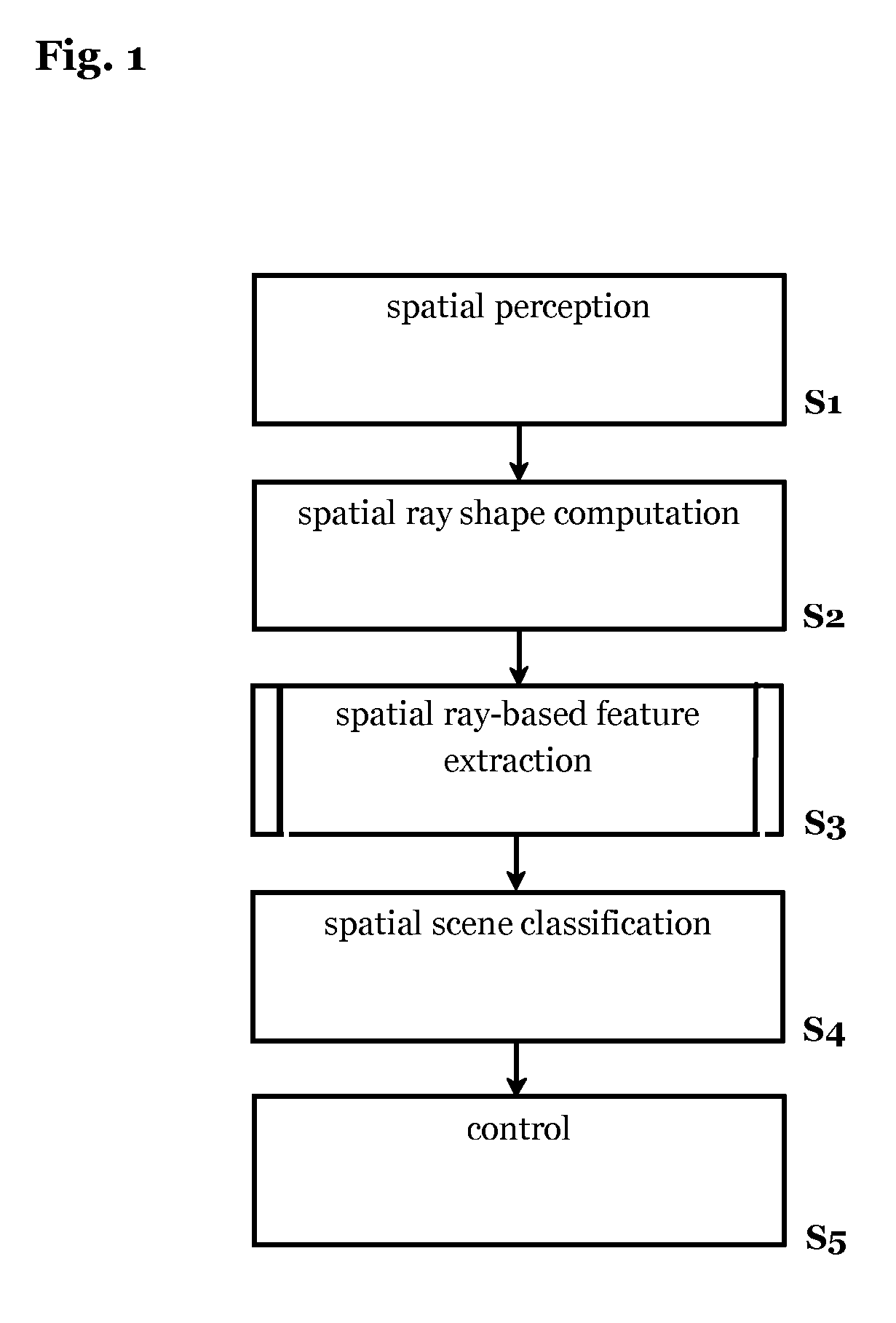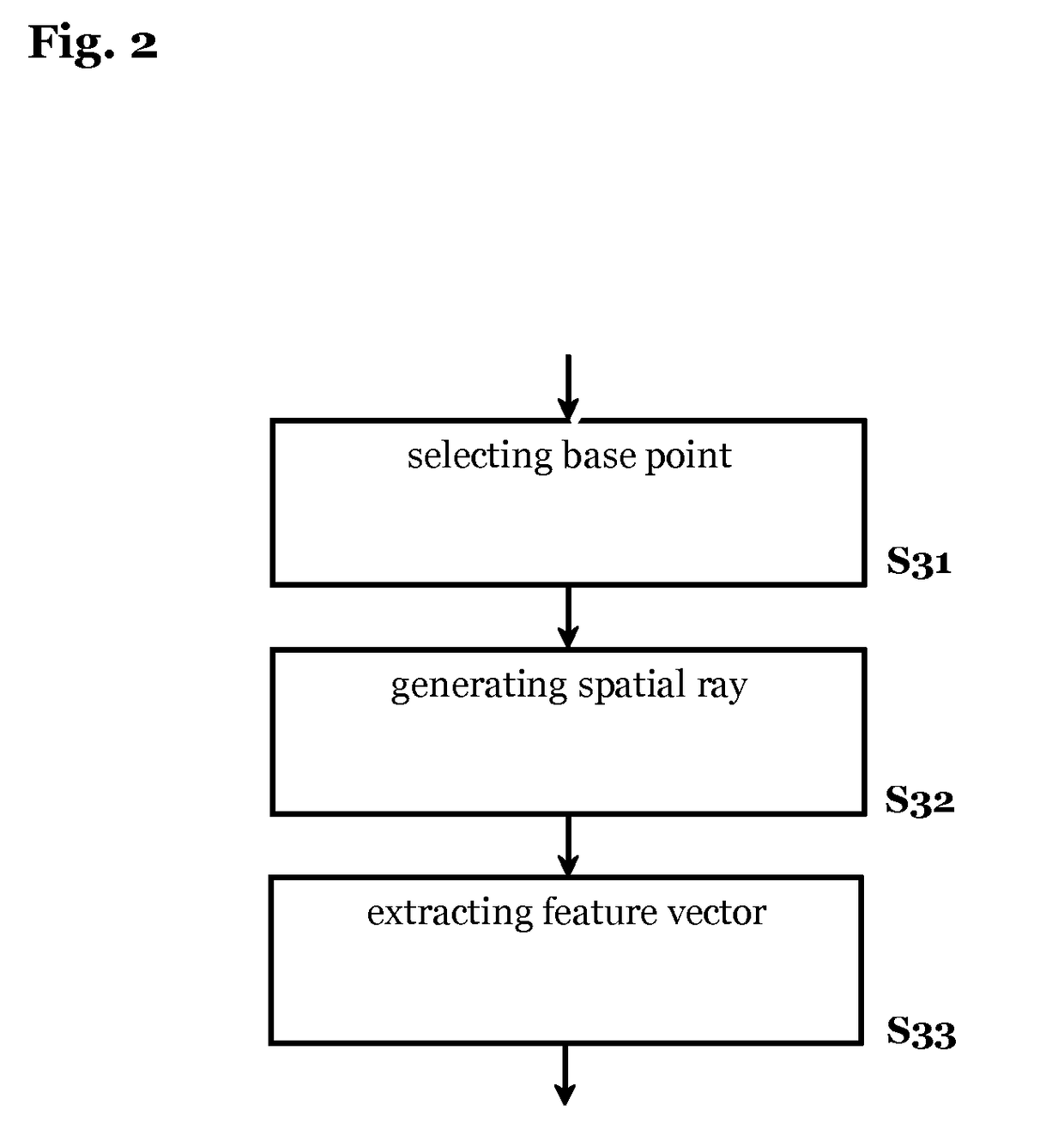Method and system for adaptive ray based scene analysis of semantic traffic spaces and vehicle equipped with such system
a technology of semantic traffic space and scene analysis, applied in scene recognition, instruments, computing, etc., can solve the problems of ignoring the interpretation of spatial data in the prior art approach, and label referring to a category (class) may be “risky”
- Summary
- Abstract
- Description
- Claims
- Application Information
AI Technical Summary
Benefits of technology
Problems solved by technology
Method used
Image
Examples
Embodiment Construction
[0057]The method according to the invention is performed on or by the ego-vehicle or a respective computing system on board of the ego-vehicle being equipped with one or more sensor means.
[0058]A sensor may be any means that can acquire information suitable for describing a traffic scene at a point in time. Such sensors may be cameras, radar, lidar or the like. Besides an active or passive sensor means for acquiring information, further information may be acquired by means of other systems, for example communication systems, car-to-car communication systems or infrastructure-to car communication.
[0059]Before describing exemplary embodiments of the invention, some general definitions of the terms used are given.
[0060]In the following a scene, sometimes also referred to as spatial scene denotes the current state of the environment surrounding a host vehicle (ego vehicle). The state of the environment comprises as parts of a scene for example a shape of a road, a type of a place in the...
PUM
 Login to View More
Login to View More Abstract
Description
Claims
Application Information
 Login to View More
Login to View More - R&D
- Intellectual Property
- Life Sciences
- Materials
- Tech Scout
- Unparalleled Data Quality
- Higher Quality Content
- 60% Fewer Hallucinations
Browse by: Latest US Patents, China's latest patents, Technical Efficacy Thesaurus, Application Domain, Technology Topic, Popular Technical Reports.
© 2025 PatSnap. All rights reserved.Legal|Privacy policy|Modern Slavery Act Transparency Statement|Sitemap|About US| Contact US: help@patsnap.com



